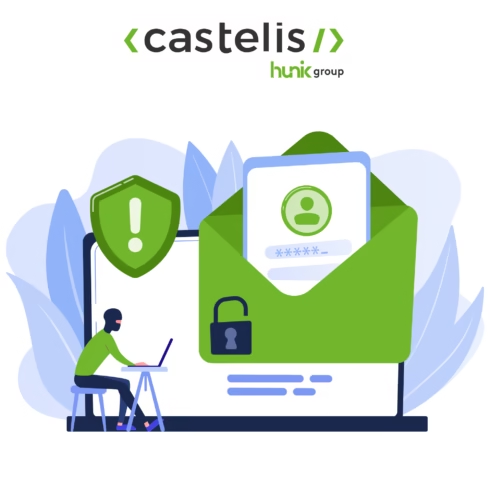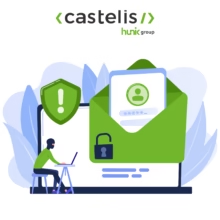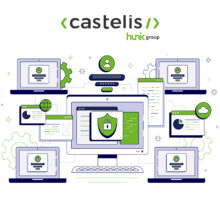
Top best practices to improve email security with DMARC
Improving email security has become a critical concern for modern businesses, particularly with the rise of phishing attacks and identity theft. These threats can cause significant damage, from the loss of sensitive data to the compromise of a company’s reputation. One of the most effective tools to counter these threats is DMARC (Domain-based Message Authentication, Reporting & Conformance). DMARC helps reduce these risks by ensuring that emails originating from your domain are authentic and by providing reports to better understand spoofing attempts.
This article details best practices for implementing DMARC and improving the security of your email communications. We will explore the essential steps for DMARC implementation, the benefits it provides, and how to maximize its effectiveness. By adopting a strategic and informed approach, businesses can strengthen their security and protect their electronic communications from growing threats.
Understanding DMARC Fundamentals
Before diving into best practices, it’s essential to understand the building blocks of DMARC. DMARC is not a standalone protocol; it relies on the integration and extension of SPF (Sender Policy Framework) and DKIM (DomainKeys Identified Mail) protocols. These protocols are designed to ensure the authenticity of emails and provide an additional layer of security against spoofing attacks. By understanding how DMARC builds on these foundations, organizations can better prepare their infrastructure for a successful implementation.
SPF and DKIM: The Building Blocks
SPF: This protocol allows domain owners to specify which mail servers are authorized to send emails on behalf of their domain. By reducing the ability of attackers to send fraudulent emails, SPF plays a crucial role in preventing spoofing. A properly configured SPF record is an important first step in securing your domain from abuse.
DKIM: It adds a digital signature to each email, allowing the recipient to verify the integrity and authenticity of the message. The associated public key is published in the domain’s DNS, ensuring that only signed emails can be considered authentic. With this signature, recipients can trust the source and content of the email, which is essential for maintaining the credibility of your communications.
DMARC uses these two protocols to validate the origin of emails and provides a mechanism for handling messages that fail these validations. By combining SPF and DKIM, DMARC offers a robust method to identify and address suspicious messages, thus enhancing overall email security.
Implementing DMARC: Essential Steps to Improve Email Security
The implementation of DMARC requires a deep understanding of your email infrastructure. Without a clear and accurate assessment of your environment, it’s difficult to properly configure DMARC policies. Here are the essential steps to ensure successful implementation:
1. Email Infrastructure Analysis
Start by analyzing your email infrastructure to understand which servers are authorized to send emails for your domain. This step is crucial for properly configuring your SPF policy. Accurately mapping your mail servers will help you establish a solid foundation for your SPF and DKIM records. It will also assist in identifying potential anomalies in your mail flow, which could indicate malicious activity.
2. SPF and DKIM Configuration
Ensure that your SPF and DKIM records are correctly configured. For SPF, publish a DNS record listing all authorized mail servers. For DKIM, generate a key pair and publish the public key in DNS. This configuration ensures that only emails from verified sources are accepted, which is crucial for the credibility of your domain and the security of your communications.
3. Define a DMARC Policy
Create a DMARC record in your domain’s DNS. The DMARC policy consists of three levels: none (no action), quarantine (quarantine suspicious emails), and reject (reject non-compliant emails). Start with a none policy to monitor the impact before moving to a stricter policy. This gradual approach allows you to adjust your settings without disrupting the deliverability of your legitimate emails.
4. Monitoring and Analysis
Utilize DMARC reports to analyze your email traffic and identify potential sources of fraud. These reports will allow you to adjust your SPF, DKIM, and DMARC policies accordingly. By continuously monitoring these reports, you can quickly detect spoofing attempts and take the necessary measures to counter them. Regular analysis will also help you optimize your configurations and continuously improve the security of your domain.
Best Practices for DMARC Implementation
To maximize the effectiveness of DMARC, it is important to follow certain best practices. These practices will help you get the most out of your DMARC implementation and ensure optimal protection against email threats.
Stakeholder Engagement
Ensure that all stakeholders, including IT and security departments, understand the importance of DMARC and are committed to its implementation. This includes training on the basic concepts and benefits of DMARC compliance. Strong engagement from all stakeholders ensures that the necessary resources and support are available for a successful implementation. Additionally, it facilitates communication and collaboration between teams, which is essential for responding quickly and effectively to security incidents.
Phased Implementation
Take a phased approach to DMARC implementation. Start with none, then progress to quarantine, and finally reject. This progression helps minimize the impact on the deliverability of legitimate emails. By gradually testing and adjusting your policies, you can identify and resolve potential issues without disrupting your daily operations.
Collaborate with Email Service Providers
Work closely with your email service providers to ensure that SPF and DKIM records are configured correctly. They can also provide tools and reports to assist with monitoring and analysis. Working with your email service providers ensures that you benefit from their expertise and resources to optimize the security of your communications. Good collaboration can also facilitate the deployment of new strategies and the adoption of emerging technologies to further strengthen your email security.
Benefits of DMARC
Implementing DMARC offers several significant benefits for email security. These benefits not only help protect your domain, but also increase your recipients’ trust in your communications.
Improved Deliverability
By validating the authenticity of your emails, DMARC improves deliverability by reducing the risk of your messages being marked as spam. This translates into better communication with your customers and partners, and ensures that your important messages reach their destination. Improved deliverability can also have a positive impact on your email marketing ROI.
Brand Protection
DMARC protects your brand from impersonation by preventing attackers from sending fraudulent emails using your domain. By preventing these attacks, you not only protect your reputation, but also the trust your customers and partners place in your brand. Effective brand protection is essential to maintain a positive image and avoid the potential consequences of a security compromise.
Compliance and Reputation
By implementing DMARC, you ensure compliance with security best practices and improve your domain’s reputation with email service providers. A good domain reputation can lead to better deliverability and increased recognition by email filtering systems. In addition, being compliant with established security standards strengthens the trust your customers and partners have in the security of your communications.
DMARC, the Foundation of Email and Domain Name Security
Improving email security with DMARC is a complex but essential process to protect your organization from phishing and identity theft. By following the best practices outlined in this article, you can strengthen the security of your email communications, improve deliverability, and protect your brand’s reputation. Investing in DMARC is a critical step toward a robust and effective email security strategy. By staying vigilant and adapting your policies to emerging threats, you can ensure the continued security of your email communications and maintain the trust of your recipients.
improve email security
Voir plus de Actualités

Top best practices to improve email security with DMARC

Cloudflare Zaraz Guide: Manage your third-party scripts at the Edge for better web performance

Optimizing the use of LLMs in business thanks to RAG (Generation Augmented by Recovery)
